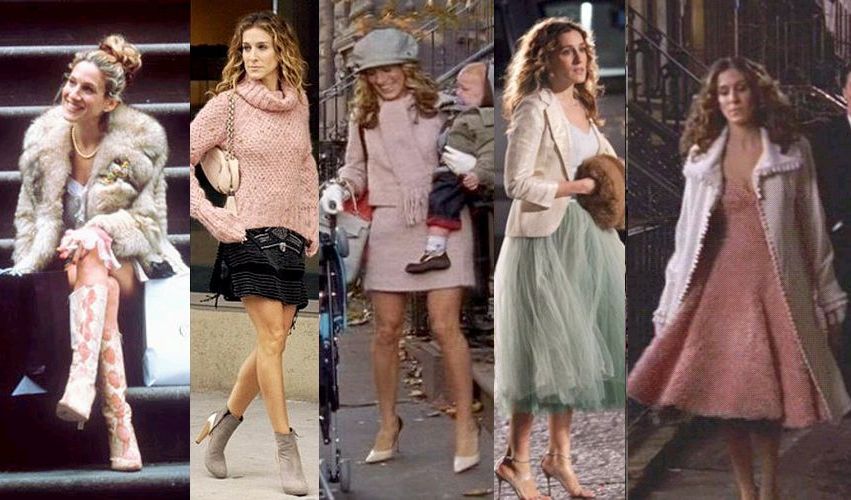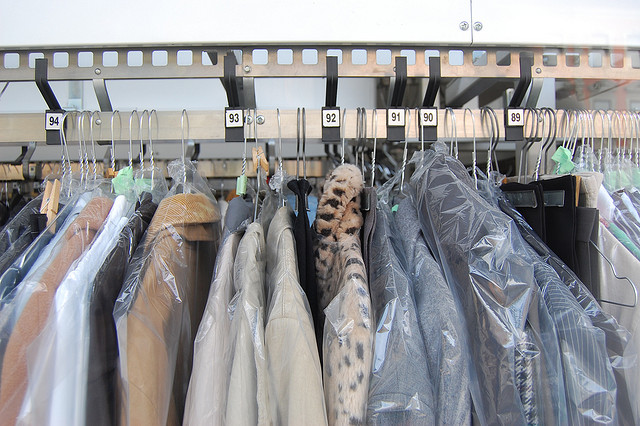Mary Jane Fashion looks at some of the sartorial superstars from our favourite novels and TV shows
Whilst there are numerous famous actresses and musicians who are recognised as some of the best dressed people on the planet, there are many others who are similarly sartorially gifted: they’re just not exactly real. Over the years, beautifully dressed and styled fictional characters have graced our television and film screens, helping to launch a thousand trends in the process, as well as the careers of the actors who have sported them. Elsewhere, best dressed literary characters have become icons of modern literature, with their penchant for dressing well becoming importantcomments on the social and cultural conditions at work at the time. We’ve looked a little deeper at some of our favourite fictional fashion icons, decoding their style and what have made their looks so popular and so timeless.
1. Carrie Bradshaw, Sex and the City
The lead character of the hit HBO show which was on TV from 1998 to 2004 and made into two successful films, Carrie is a columnist writing about love, sex and relationships. Living the dream in New York, she has a fabulously flamboyant and avant-garde wardrobe to match, offering us fabulous one-liners (‘I like my money where I can see it–hanging in my closet’ is a killer quote) to express her love affairs with her clothes.

It might seem slightly unrealistic that a columnist would have enough money to spend on a the most expensive designer labels, for example the likes of Jimmy Choo, Manolo Blahnik and Prada, but with clothes that good, we’re more than willing to buy into the fallacy. All of Carrie’s ensembles were styled by Patricia Fields, who went on to style The Devil Wears Prada and Ugly Betty, and she often opted for colourful voluminous numbers: Carrie was rarely seen out of bright colours and a full tulle skirt, wearing floral prints, three dimensional textures like faux fur and leather and wearing a series of hats and headscarves.
Although there were many rules that Carrie created regarding love and her life, her style capabilities seemed limitless, offering an irreverent and adventurous perspective on modern fashion. Clothes are an inherent part of Carrie’s identity, offering her power, comfort and stability when even her closest relationships began to disintegrate. As a result, she became a cultural icon. Sarah Jessica Parker, who played Carrie, went on to forge firm links with the fashion industry, becoming friends with the late, great Alexander McQueen and was the co-chair of the Met Gala’s committee in 2014.
2. The entire cast of Gossip Girl
Picking up the sartorial stakes where Sex and the City left off, in 2007 Gossip Girl turned its attention to New York’s wealthiest teenagers and their decadent and luxurious lives on the Upper East Side. The show tapped into the late Noughties zeitgeist effortlessly, with the emergence of blogging and social media becoming a focal point of the character’s relationships with others and themselves

In a world predicated on popularity, social class and wealth, clothing became an important identifier of standing for both the girls and the boys, exacerbating tensions between social groups and becoming absolute eye-candy for viewers. Every character had their own unique sense of style: Blair Waldorf was famed for her prim, preppy style and penchant for dramatic embellished hairbands; Serena Van Der Woodsen wore slouchy but sophisticated ensembles for day, and by nightnegated the cleavage or legs rule by opting for both; Chuck Bass sported a series of colourful suits, cravats, socks and braces; Jenny Humphrey metamorphosed from girl-next-door cute to ‘Gothic Barbie’; Nate Archibald sported simple all-American style while Dan Humphrey played up to the penniless writer look with plaid shirts, jeans and scruffy hair. Overall, the Gossip Girl wardrobe was worth £12 million, spanning 1, 500 square feet and occupying five floors. Shop similar styles at this wholesale clothing supplier.
3. Jay Gatsby, The Great Gatsby
In many ways, shows like Gossip Girl owed a lot to F. Scott Fitzgerald’s corpus, with The Beautiful and the Damned referenced frequently as Serena Van Der Woodsen’s favourite novel, drawing parallels between the rich and morally questionable Upper East Siders of 2007 and the people chasing the American Dream in Fitzgerald’s 1920s works. One of the most famous of Fitzgerald’s protagonists is Jay Gatsby.

Starting off life as a poor soldier, he amasses great wealth through bootlegging, all so that he can catch the attention of the girl who got away: Daisy Buchanan. One of the ways in which he demonstrates his newfound wealth to Daisy is by throwing all of his custom-made shirts out from his wardrobe.
The novel’s narrator, Nick Caraway, describes the variety of shirts Gatsby has made for him every season: ‘shirts of sheer linen and thick silk and fine flannel, which lost their folds as they fell and covered the table in many-colored disarray […] shirts with stripes and scrolls and plaids in coral and apple-green and lavender and faint orange, and monograms of Indian blue’. Daisy famously begins to weep at the sight of all the shirts, partially in regret of her choice to refuse Gatsby when they were younger but also because she is hopelessly and unashamedly materialistic, overwhelmed by the choice, the colours and the luxuriousness of the shirts falling around her.





